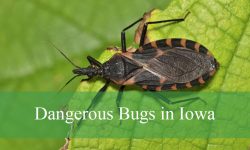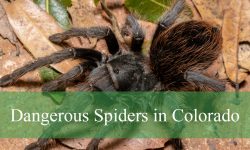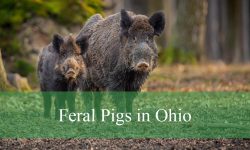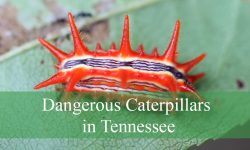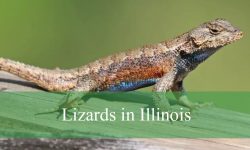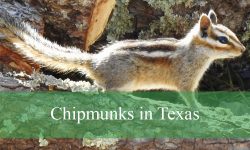Florida is home to various species of grasshoppers, each with its own unique characteristics. In this guide, we’ll explore 20 distinct types of grasshoppers found in the state, including their identifying features and habitats.
Different Types of Grasshoppers in Florida
Mischievous Bird Grasshopper (Schistocerca damnifica)
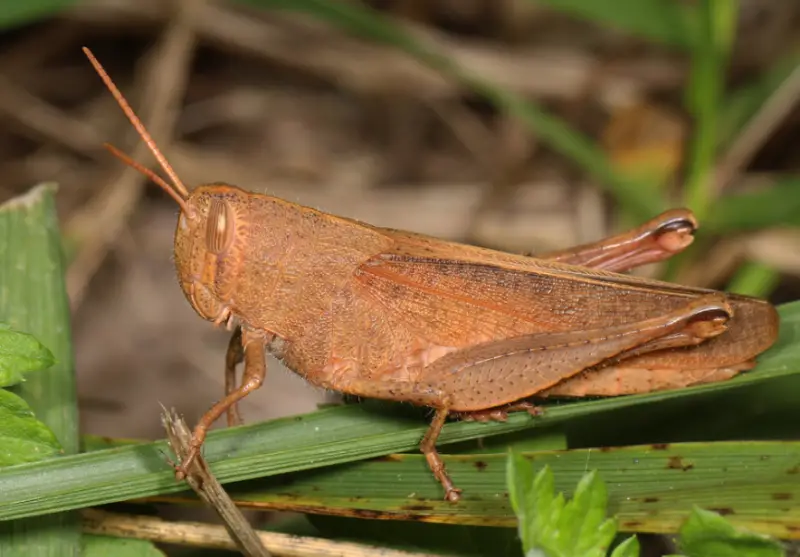
The Mischievous Bird Grasshopper is a smaller member of the Bird Grasshoppers, often found in the eastern United States, including Florida. Females grow to 3.7–4.6 cm, while males are smaller at 2.5–2.9 cm. They are recognized by their reddish-brown bodies and a narrow brown line running along their head and pronotum.
Unlike other Bird Grasshoppers, they lack the prominent yellow dorsal stripe. This, combined with their smaller size, helps distinguish them from other species in the Schistocerca genus.
American Bird Grasshopper (Schistocerca americana)
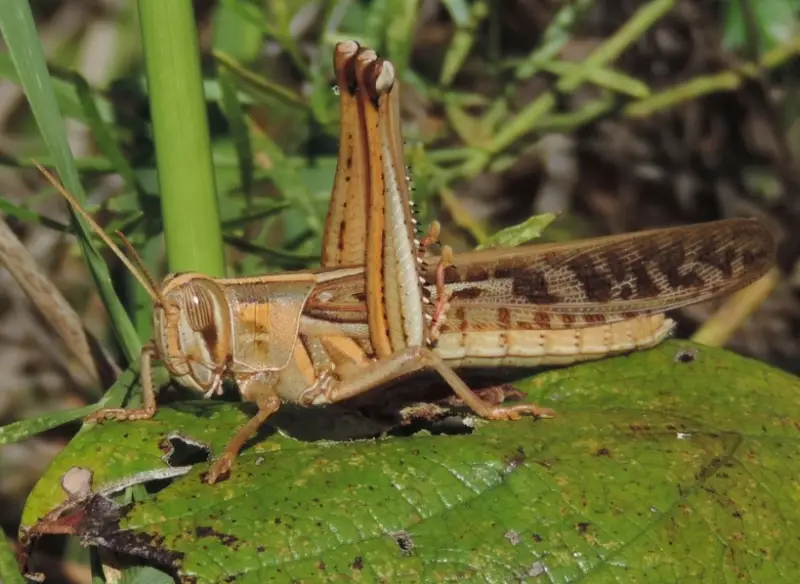
One of the largest grasshoppers in Florida, the American Bird Grasshopper measures 4.8–6.8 cm in females and 3.9–5.2 cm in males. These grasshoppers are widespread in North America and are particularly abundant in the eastern U.S.
They have a yellowish-brown body with pale wings dotted with dark brown spots. Nymphs look entirely different from the adults, undergoing significant changes in color as they mature. Both sexes have powerful wings and a robust build, making them strong fliers.
Obscure Bird Grasshopper (Schistocerca obscura)
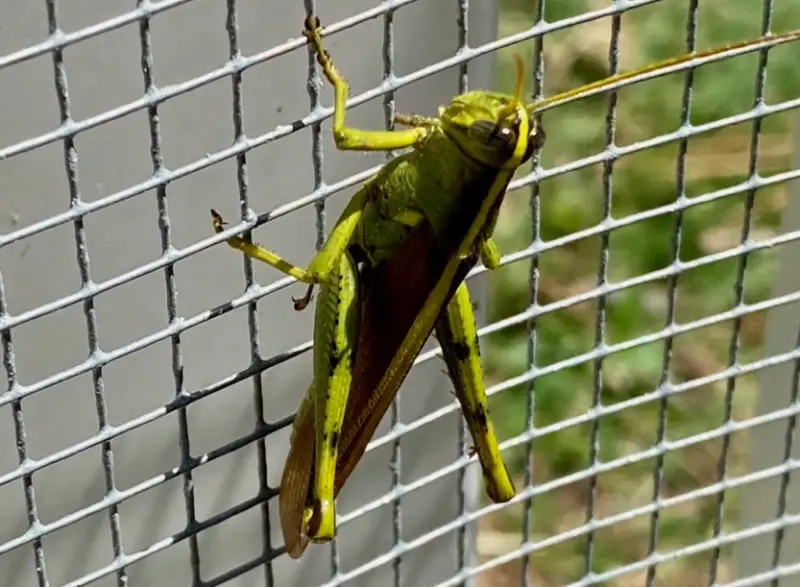
Obscure Bird Grasshoppers are commonly found in fields and open woodlands in the eastern U.S. Females are typically larger, growing up to 6.5 cm, while males reach up to 4.5 cm. They are green with a pale-yellow dorsal stripe that runs along their length. Their olive-green forewings occasionally feature brownish spots, especially in females.
They are often confused with the Rusty Bird Grasshopper but are larger in size. The Obscure Bird Grasshopper’s coloration helps it blend in with vegetation, providing effective camouflage.
Rosemary Grasshopper (Schistocerca ceratiola)
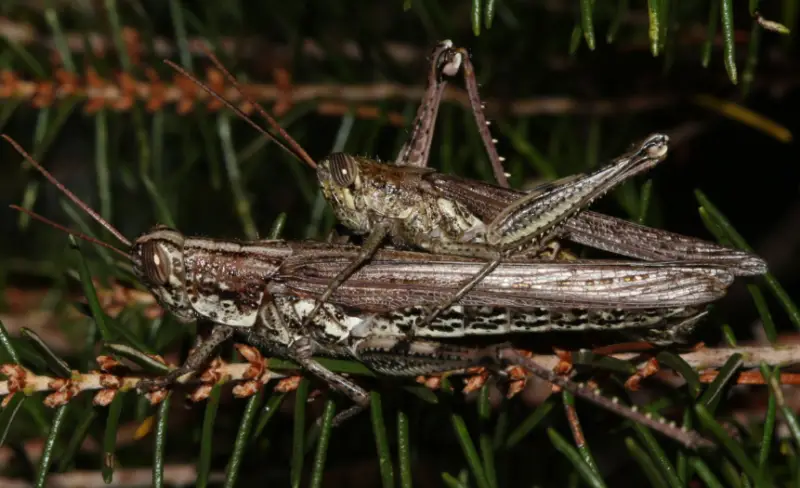
Named for their preference for hiding in rosemary bushes, Rosemary Grasshoppers are unique to Florida. Females grow to 3.6–4 cm, while males are slightly smaller at 2.8–3.2 cm. Their slim bodies are mottled grey and brown, with a greenish hue on the abdomen. A faded pale vertical stripe runs along their body, becoming less visible near the wings.
These grasshoppers are nocturnal, which makes them more difficult to spot during the day.
Rusty Bird Grasshopper (Schistocerca alutacea)
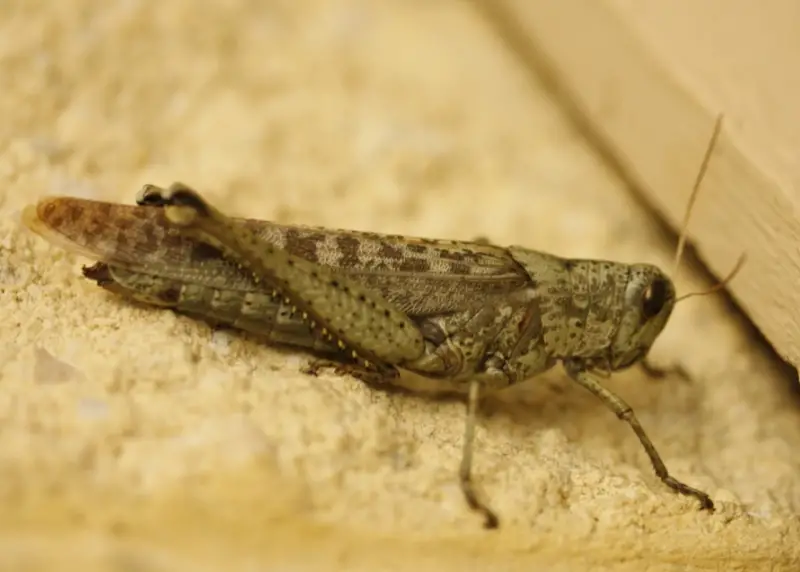
Rusty Bird Grasshoppers are commonly found across the United States, including Florida. Females grow up to 5.4 cm, and males reach about 4 cm. They are named for their rusty brown or golden body, although color variations exist, such as olive-brown with a vertical yellow stripe.
These grasshoppers are often mistaken for Obscure Bird Grasshoppers but are smaller and have different genital notches. The Rusty Bird Grasshopper’s U-shaped sub-genital plate helps differentiate it from similar species.
Oak Spurthroat Grasshopper (Melanoplus querneus)
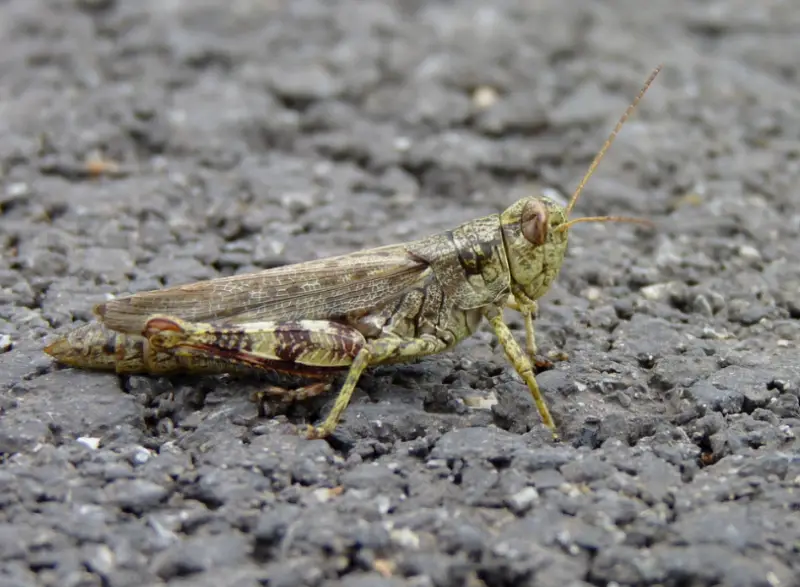
Also known as the Larger Sandhill Grasshopper, the Oak Spurthroat Grasshopper is found in moist environments with tall vegetation. Females reach 4 cm, while males grow up to 2.7 cm. These flightless grasshoppers have a brown body with yellowish or greyish markings on their forewings and upper parts.
They have short wings that do not aid in flight. A dark stripe runs between their eyes and pronotum, though it can be faint. Both sexes have similar appearances, but females are slightly larger.
Florida Spur-throat Grasshopper (Melanoplus puer)
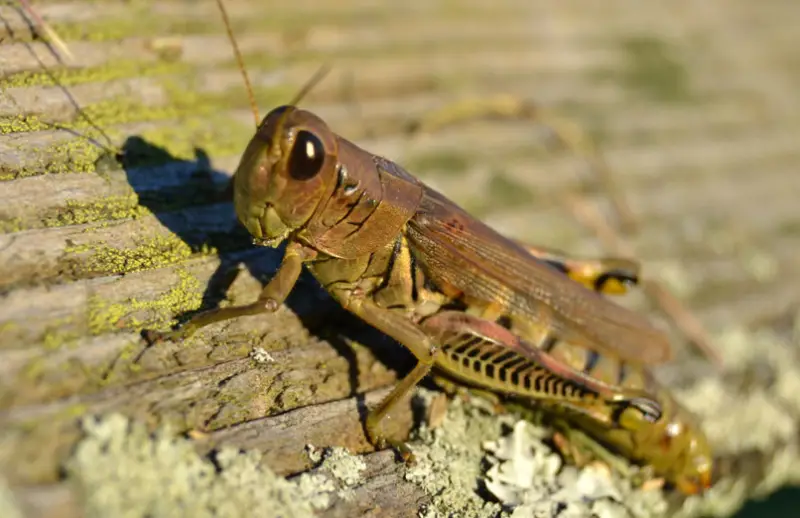
Endemic to Florida, the Florida Spur-throat Grasshopper is one of the smallest in its genus, with females reaching 2.1 cm and males only 1.6 cm. These grasshoppers are reddish-brown with a greyish or purplish hue on their dorsal side and yellowish-brown undersides. The males are distinguished by a shiny-black stripe behind their eyes, which is absent in females.
They primarily inhabit wiregrass patches in open woodlands and are easily overlooked due to their small size.
Migratory Grasshopper (Melanoplus sanguinipes)
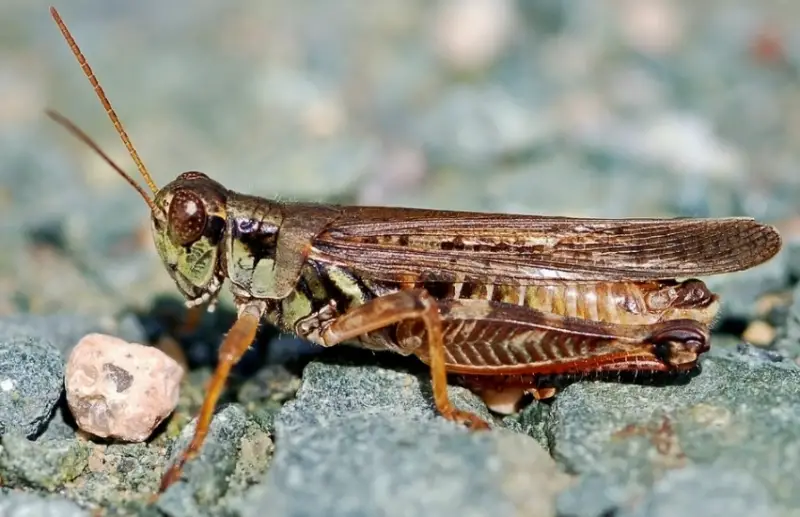
Migratory Grasshoppers are widespread across North America, preferring crop fields and weedy pastures. Females grow to 2.9 cm, and males reach about 2.4 cm. They are known for their behavioral changes when population densities rise, similar to locusts. They travel in large groups, moving across vast distances.
These grasshoppers are greyish-brown with a bold black stripe from their eyes to their pronotum. Their forewings are long, brownish, and spotted. Both sexes are similar, with males being slightly smaller.
Larger Fork-Tailed Grasshopper (Melanoplus furcatus)
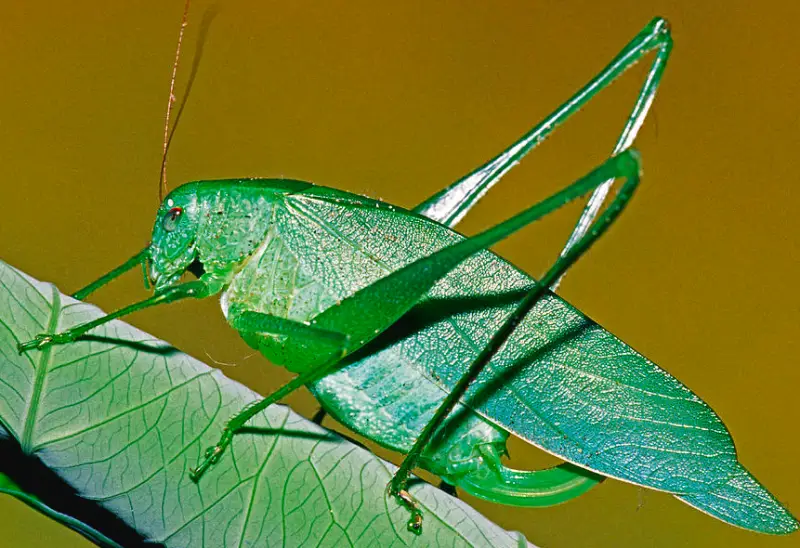
The Larger Fork-Tailed Grasshopper, also known as the Fork-Tailed Locust, is often found in dense shrubbery near swamps and streams. Females are 3.9 cm, while males are 3.1 cm in length. They have a brown body with occasional reddish tints, and their wings grow darker near the base. The females possess a furcula, which the males lack.
Their habitat preferences near water help them blend into their surroundings, making them harder to detect.
Longheaded Toothpick Grasshopper (Achurum carinatum)
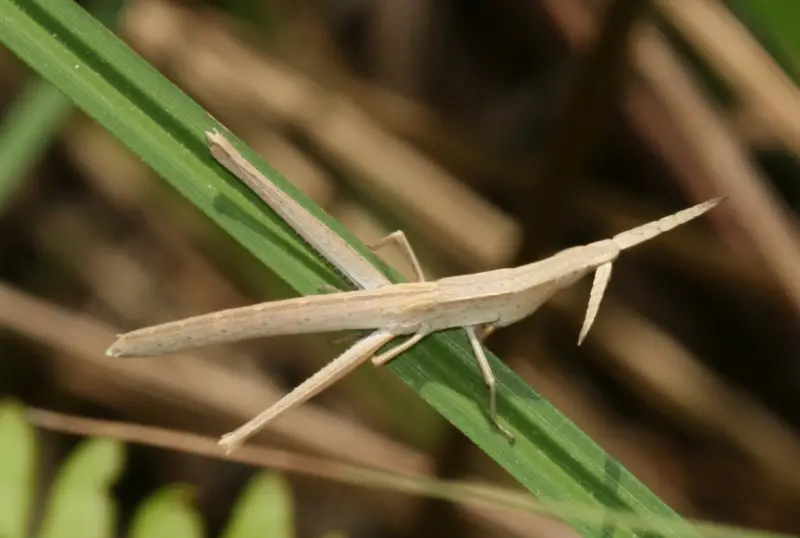
These slender grasshoppers are named for their elongated heads. Females measure 4 cm, and males are smaller at 3.6 cm. They inhabit pine flatwoods, tall grasses, and pond margins across the southeastern U.S. Longheaded Toothpick Grasshoppers have a brown body with a greyish tint, while their legs and forewings are partly green.
They are flightless and possess short forewings. Their slanted faces and sword-like antennae make them easily recognizable, and both sexes share similar features.
Elegant Grasshopper (Dichromorpha elegans)
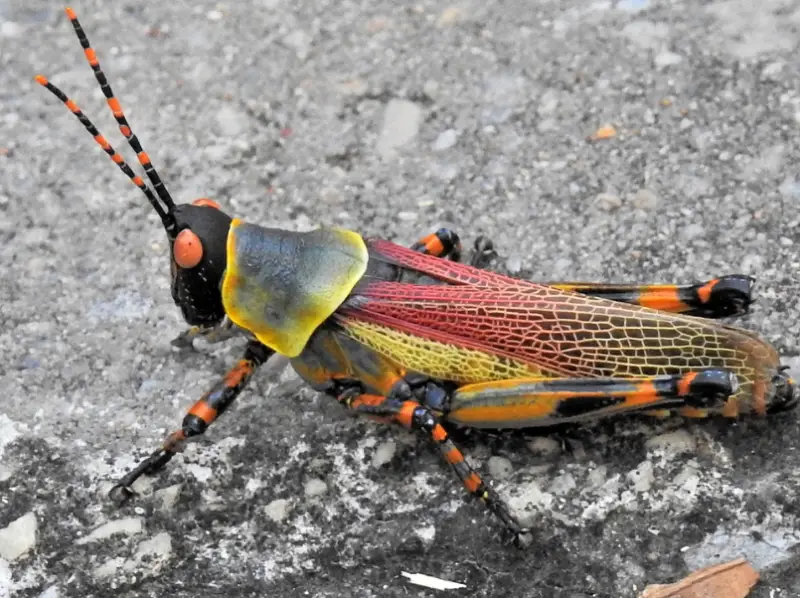
Elegant Grasshoppers inhabit moist environments like salt marshes and swamps. Females grow to 2.8 cm, and males up to 2.1 cm. They have a grass-green or brown body with a slanted face and a large, rounded head. Two dark stripes run between their eyes and forewings. Males are smaller and more slender than females, which are bulkier.
Despite their name, their appearance is more functional than elegant, helping them blend into their wetland habitats.
Glassy-Winged Toothpick Grasshopper (Stenacris vitreipennis)
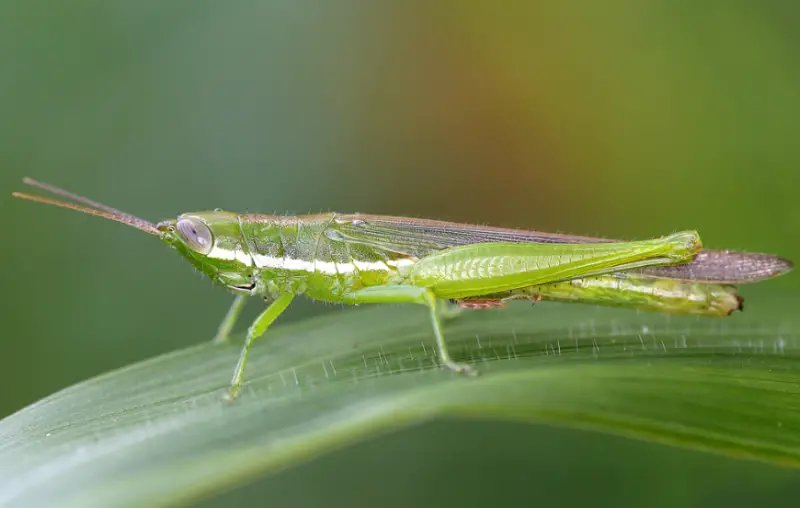
These slender, elongated grasshoppers are found in semi-aquatic vegetation like pickerelweed and cattails. Females grow to 2.9 cm, and males are slightly smaller at 2.6 cm. Their green or brownish-green bodies have a dark or pale dorsal stripe.
Both sexes look alike, but females are larger. Their pointed heads and sword-like antennae help distinguish them from other species. They are adept at camouflaging themselves in aquatic vegetation.
Spotted-Winged Grasshopper (Orphulella pelidna)
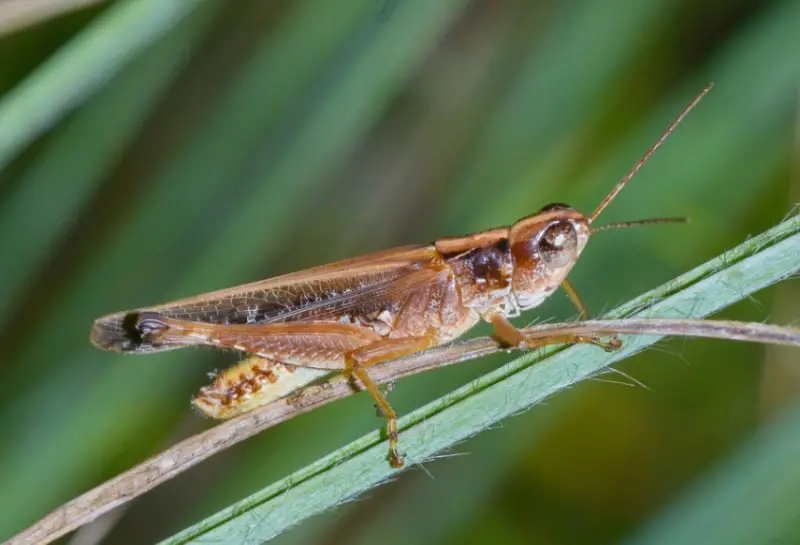
Spotted-Winged Grasshoppers are one of the most widespread species in Florida. Females measure 2.8 cm, and males are slightly smaller at 2.5 cm. Their appearance varies, but they commonly have brown or green bodies with black triangular marks on their pronotum.
Their forewings feature a series of rectangular spots, which gives them their name. These grasshoppers are adept at blending into their surroundings, making them difficult to spot in tall grasses.
Clipped-Wing Grasshopper (Metaleptea brevicornis)
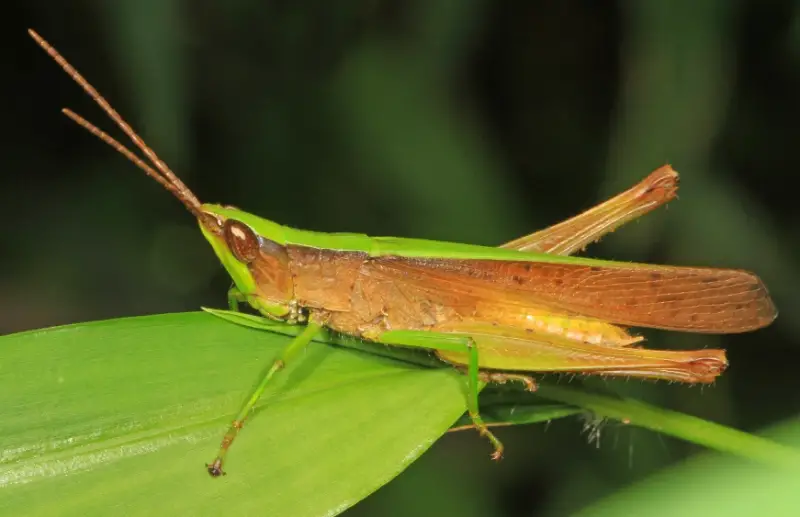
Found near water bodies, Clipped-Wing Grasshoppers are unique to the U.S. Females are larger at 5.3 cm, while males are 3.8 cm. They have brown or green bodies, with males typically having a brown upper body and green sides.
Their sword-shaped antennae are rusty brown, and their angled forewings distinguish them from other long-winged grasshoppers in Florida. They are often seen in tall grasses near rivers and ponds.
Wrinkled Grasshopper (Hippiscus ocelote)
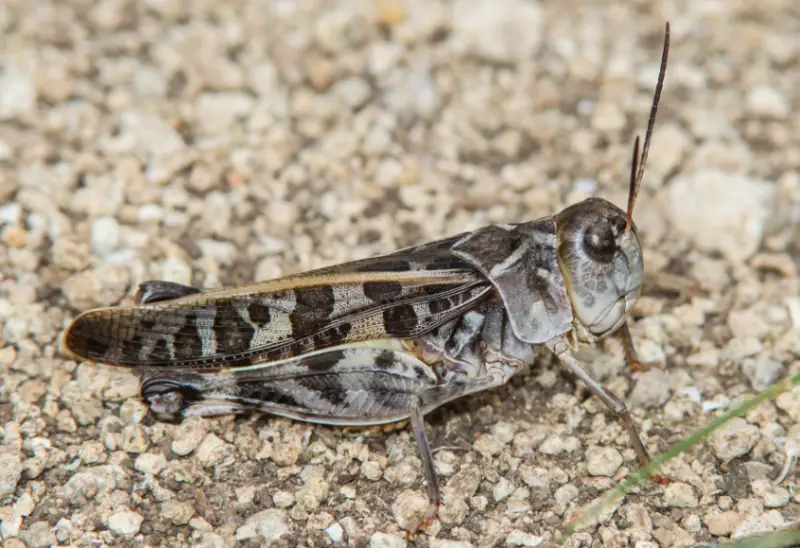
The Wrinkled Grasshopper is a robust species with females growing up to 5.3 cm and males to 4 cm. Found in states like Florida, Colorado, and New Jersey, they are powerful fliers but move clumsily when carrying eggs. Their grey or brown bodies have coarse, wrinkled pronotums, which give them their name.
They are recognizable by the two yellow spots on their pronotum and an X-shaped marking on their bodies. Their wings are translucent with dark veining.
Short-Winged Green Grasshopper (Dichromorpha viridis)
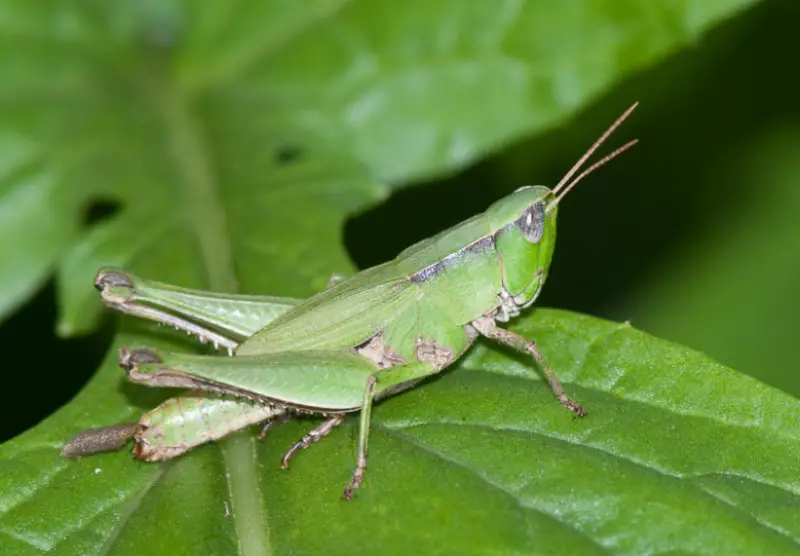
The Short-Winged Green Grasshopper, also called the Green Slant-faced Grasshopper, is found in eastern U.S. fields, pastures, and roadsides. Females are larger, measuring 3 cm, while males grow up to 2.2 cm. They are sexually dimorphic, with females being more uniformly green or brown. Males have a variety of color forms, including green with brown sides or light brown with darker sides.
This species prefers grassy habitats and is well-camouflaged in its surroundings.
Green-Striped Grasshopper (Chortophaga viridifasciata)
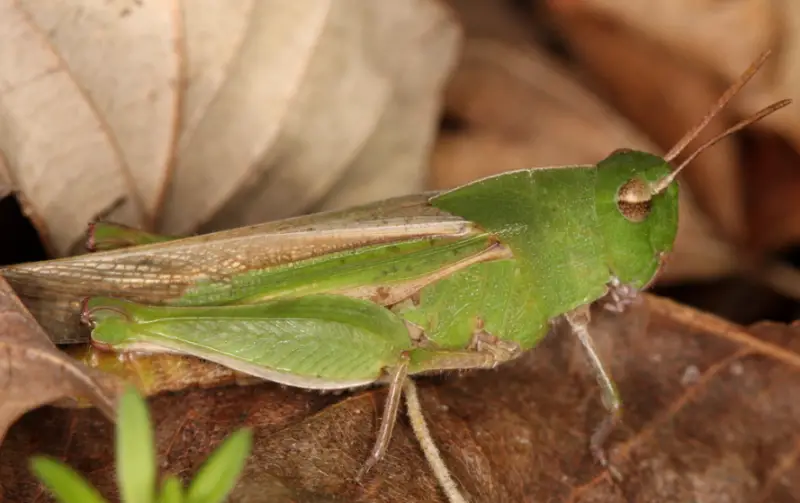
The Green-Striped Grasshopper inhabits moist environments, such as pastures and fields. Females, at 3.8 cm, are larger than males, which grow up to 3 cm. Females are green, while males are typically brown with darker markings. Both sexes have yellowish wings, and a green or brown stripe runs down their backs.
This species is sexually dimorphic, with males and females displaying significant size and color differences.
Southeastern Lubber Grasshopper (Romalea microptera)
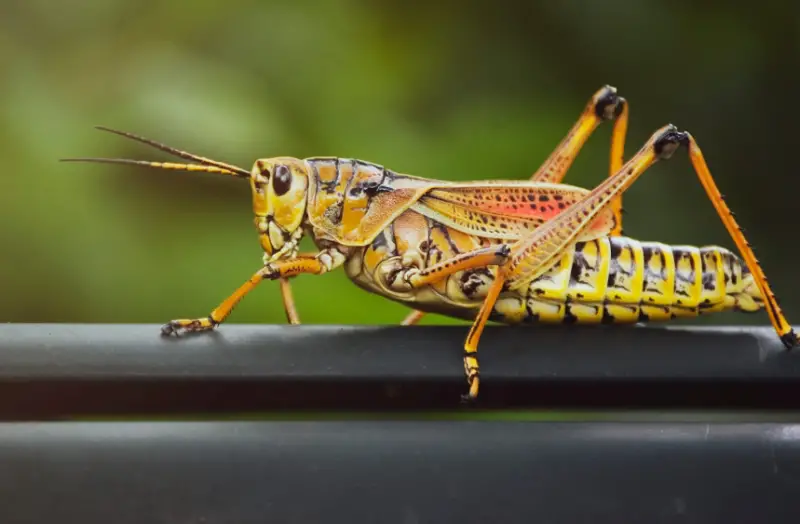
The Southeastern Lubber Grasshopper, or Florida Lubber, is one of the most iconic grasshoppers in the southeastern U.S. They are large, flightless grasshoppers, growing up to 8 cm. Their bodies vary from black with yellow or red stripes to bright orange with black spots. Despite their large size, their small wings are non-functional, and they move clumsily.
This species is toxic to predators, releasing a foul-smelling foam when threatened. Lubbers are often found in gardens and fields, making them one of the most familiar species in Florida.

